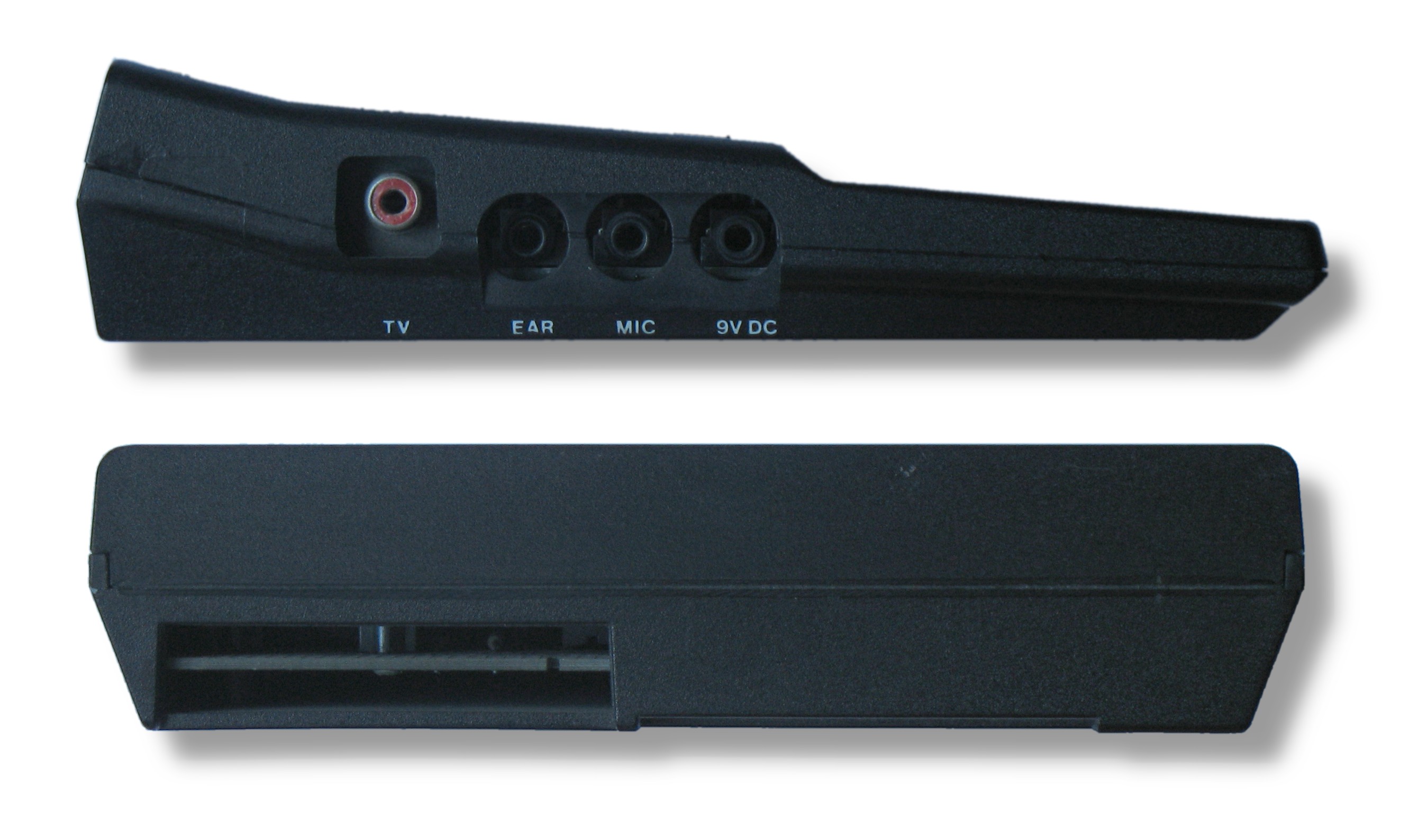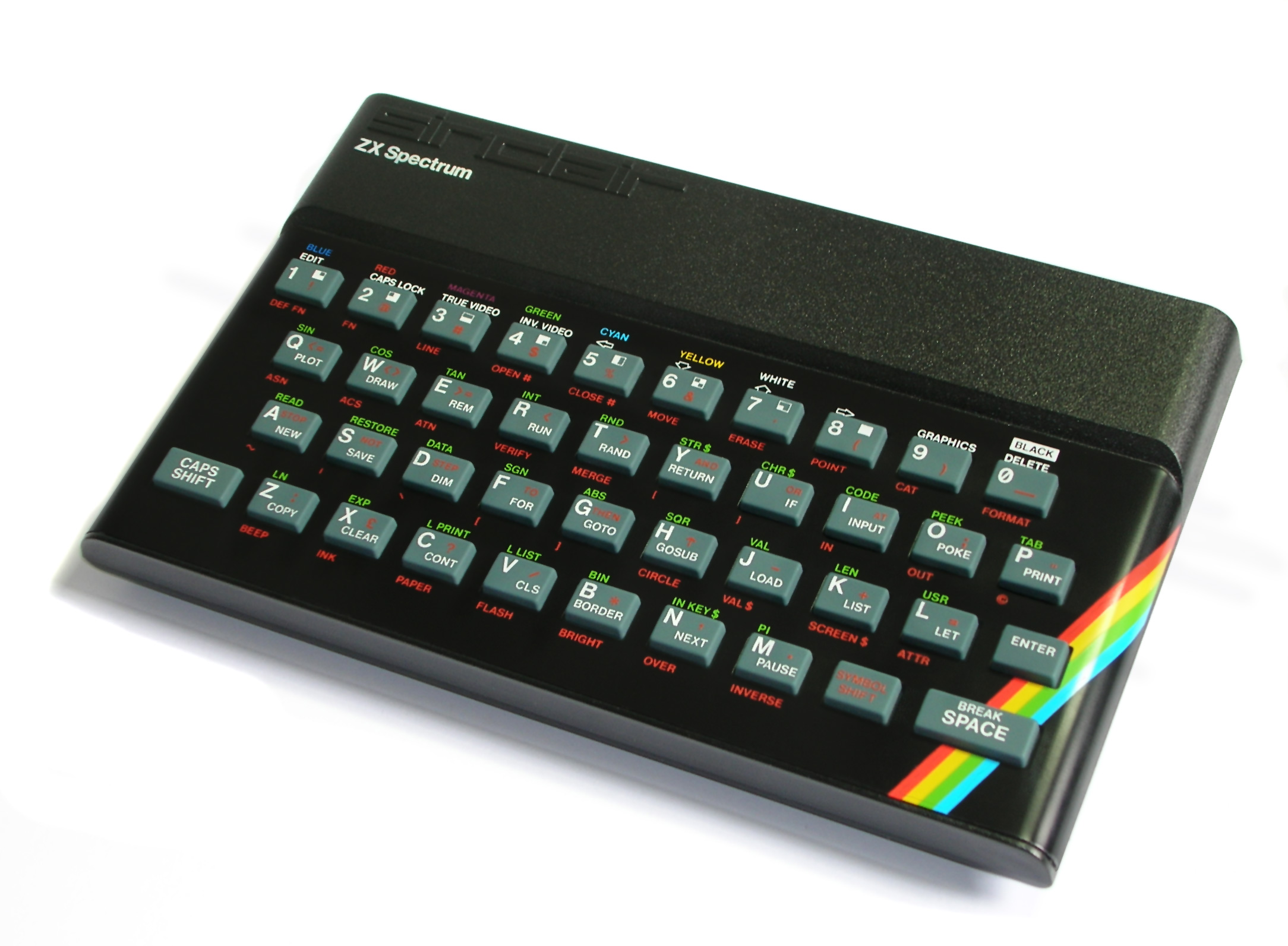|
Gate Array
A gate array is an approach to the design and manufacture of application-specific integrated circuits (ASICs) using a semiconductor device fabrication, prefabricated chip with components that are later interconnected into logic devices (e.g. NAND gates, Flip-flop (electronics), flip-flops, etc.) according to custom order by adding metal interconnect layers in the factory. It was popular during the upheaval in the semiconductor industry in the 1980s, and its usage declined by the end of the 1990s. Similar technologies have also been employed to design and manufacture analog, analog-digital, and structured arrays, but, in general, these are not called gate arrays. Gate arrays have also been known as uncommitted logic arrays ('ULAs'), which also offered linear circuit functions, and ''semi-custom chips''. History Development Gate arrays had several concurrent development paths. Ferranti in the UK pioneered commercializing bipolar transistor, bipolar ULA technology, offering c ... [...More Info...] [...Related Items...] OR: [Wikipedia] [Google] [Baidu] [Amazon] |
ZX81 ULA
The ZX81 is a home computer that was produced by Sinclair Research and manufactured in Dundee, Scotland, by Timex Corporation. It was launched in the United Kingdom in March 1981 as the successor to Sinclair's ZX80 and designed to be a low-cost introduction to home computing for the general public. It was hugely successful; more than 1.5 million units were sold. In the United States it was initially sold as the ZX-81 under licence by Timex. Timex later produced its own versions of the ZX81: the Timex Sinclair 1000 and Timex Sinclair 1500. Unauthorized List of ZX80 and ZX81 clones, ZX81 clones were produced in several countries. The ZX81 was designed to be small, simple, and above all, inexpensive, with as few components as possible. Video output was designed for a television set rather than a dedicated computer monitor, monitor. computer program, Programs and data are Loader (computing), loaded and saved onto compact audio cassettes. It uses only four silicon chips and 1&n ... [...More Info...] [...Related Items...] OR: [Wikipedia] [Google] [Baidu] [Amazon] |
NMOS Logic
NMOS or nMOS logic (from N-type metal–oxide–semiconductor) uses n-type (-) MOSFETs (metal–oxide–semiconductor field-effect transistors) to implement logic gates and other digital circuits. NMOS transistors operate by creating an inversion layer in a p-type transistor body. This inversion layer, called the n-channel, can conduct electrons between n-type ''source'' and ''drain'' terminals. The n-channel is created by applying voltage to the third terminal, called the ''gate''. Like other MOSFETs, nMOS transistors have four modes of operation: cut-off (or subthreshold), triode, saturation (sometimes called active), and velocity saturation. NMOS AND-by-default logic can produce unusual glitches or buggy behavior in NMOS components, such as the 6502 "illegal opcodes" which are absent in CMOS 6502s. In some cases such as Commodore's VIC-II chip, the bugs present in the chip's logic were extensively exploited by programmers for graphics effects. For many years, NMOS ci ... [...More Info...] [...Related Items...] OR: [Wikipedia] [Google] [Baidu] [Amazon] |
ZX Spectrum
The ZX Spectrum () is an 8-bit computing, 8-bit home computer developed and marketed by Sinclair Research. One of the most influential computers ever made and one of the all-time bestselling British computers, over five million units were sold. It was released in the United Kingdom on 23 April 1982, and around the world in the following years, most notably in Europe and the United States. The machine was designed by English entrepreneur and inventor Sir Clive Sinclair and his small team in Cambridge, and was manufactured in Dundee, Scotland by Timex Corporation. It was made to be small, simple, and most importantly inexpensive, with as few components as possible. The addendum "Spectrum" was chosen to highlight the machine's colour display, which differed from the black-and-white display of its predecessor, the ZX81. Rick Dickinson designed its distinctive case, rainbow motif, and chiclet keyboard, rubber keyboard. Video output is transmitted to a television set rather than a ded ... [...More Info...] [...Related Items...] OR: [Wikipedia] [Google] [Baidu] [Amazon] |
Sinclair ZX81
The ZX81 is a home computer that was produced by Sinclair Research and manufactured in Dundee, Scotland, by Timex Corporation. It was launched in the United Kingdom in March 1981 as the successor to Sinclair's ZX80 and designed to be a low-cost introduction to home computing for the general public. It was hugely successful; more than 1.5 million units were sold. In the United States it was initially sold as the ZX-81 under licence by Timex. Timex later produced its own versions of the ZX81: the Timex Sinclair 1000 and Timex Sinclair 1500. Unauthorized ZX81 clones were produced in several countries. The ZX81 was designed to be small, simple, and above all, inexpensive, with as few components as possible. Video output was designed for a television set rather than a dedicated monitor. Programs and data are loaded and saved onto compact audio cassettes. It uses only four silicon chips and 1 KB of memory. It has no power switch or moving parts, with the exceptio ... [...More Info...] [...Related Items...] OR: [Wikipedia] [Google] [Baidu] [Amazon] |
Sinclair ZX80
The Sinclair ZX80 is a home computer launched on 29 January 1980 by Science of Cambridge Ltd. (later to be better known as Sinclair Research). It is notable for being one of the first computers available in the United Kingdom for less than a hundred Pound Sterling, pounds. It was available in Electronic kit, kit form for £79.95, where purchasers had to assemble and solder it together, and as a ready-built version at £99.95. The ZX80 was advertised as the first personal computer for under £100 and received praise for its value and documentation. However, it faced criticism for screen blanking during program execution, small RAM size, and the keyboard design. It was very popular straight away, and for some time there was a waiting list of several months for either version of the machine. Name The ZX80 was named after the Z80 processor with the 'X' meaning "the mystery ingredient". Hardware Internally, the machine was designed by Jim Westwood around a Zilog Z80, Z80 cent ... [...More Info...] [...Related Items...] OR: [Wikipedia] [Google] [Baidu] [Amazon] |
Sinclair Research
Sinclair Research Ltd is a British consumer electronics company founded by Clive Sinclair in Cambridge in the 1970s. In 1980, the company entered the home computer market with the ZX80 at £99.95, at that time the cheapest personal computer for sale in the United Kingdom. A year later, the ZX81 became available through retailers, introducing home computing to a generation, with more that 1.5 million sold. In 1982 the ZX Spectrum was released, becoming the UK's best selling computer, and competing aggressively against Commodore and Amstrad. A combination of the failures of the Sinclair QL computer and the TV80 pocket television led to financial difficulties in 1985, and a year later Sinclair sold the rights to its computer products and brand name to Amstrad. Sinclair Research Ltd continued to exist as a one-man company, marketing Clive Sinclair's inventions. History Founding and early years On 25 July 1961, Clive Sinclair founded his first company, Sinclair Radi ... [...More Info...] [...Related Items...] OR: [Wikipedia] [Google] [Baidu] [Amazon] |
LSI Corporation
LSI Logic Corporation was an American company founded in Santa Clara, California, was a pioneer in the ASIC and EDA industries. It evolved over time to design and sell semiconductors and software that accelerated storage and networking in data centers, mobile networks and client computing. In April 2007, LSI Logic merged with Agere Systems and rebranded the firm as LSI Corporation. On May 6, 2014, LSI Corporation was acquired by Avago Technologies (now known as Broadcom Inc.) for $6.6 billion. History 1981–2004 LSI Logic Corporation was incorporated in November 1980 by Wilfred J. Corrigan and began operating in early 1981 using leased facilities in Santa Clara, California. The name "LSI" referred to Large Scale Integration. Corrigan recruited co-founders Bill O'Meara (VP Marketing and Sales), Rob Walker (VP Engineering) and Mitchell "Mick" Bohn (CFO) as co-founders. Initial funding of $6 million came from a consortium of venture capitalists, including Kleiner Per ... [...More Info...] [...Related Items...] OR: [Wikipedia] [Google] [Baidu] [Amazon] |
Wilfred Corrigan
Wilfred J. Corrigan is a British engineer and entrepreneur, known for founding and running LSI Logic Corp. He was the chairman and chief executive of LSI for over two decades until 2005, during the earlier part of which he made vital contributions to the company. He was the founder and served twice as chairman of the Semiconductor Industry Association (SIA). Corrigan is a veteran of Fairchild Semiconductor. Life and career He was born in Liverpool, England, as the son of a dock worker, graduated with a degree in chemical engineering from the Imperial College of Science before starting his career at Motorola Semiconductor. He later joined Fairchild Semiconductor, rising through the ranks to eventually become president and CEO for five years. He left Fairchild in 1979 after selling the then ailing company to Schlumberger, an oilfield services firm. As the founder of LSI Logic, Corrigan pioneered modern-day gate array, standard-cell application-specific integrated circuit ... [...More Info...] [...Related Items...] OR: [Wikipedia] [Google] [Baidu] [Amazon] |
IBM 308X
The IBM 308X is a line of mainframe computers, of which the first model, the Model 3081 Processor Complex, was introduced November 12, 1980.IBM used a capital X when referring to 308X, as did others needing an official reference; see the Congressional Record reference. It consisted of a 3081 Processor Unit with supporting units. Later models in the series were the 3083 and the 3084. The 3083 was announced March 31 and the 3084 on September 3, both in 1982. The IBM 308X line introduced the System/370 Extended Architecture (S/370-XA) required by the new MVS/SP V2 and the Start Interpretive Execution (SIE) instruction used by the new Virtual Machine/eXtended Architecture Migration Aid (VM/XA MA). All three 308X systems, which IBM had marketed as "System/370-Compatibles," were withdrawn August 4, 1987. IBM 3081 The initial 3081 offered, the 3081D, was a 5 MIPS machine. The next offering, the 3081K, was a 7 MIPS machine. Last came the 3081G, again a 5 MIPS machine. The 3081D was ... [...More Info...] [...Related Items...] OR: [Wikipedia] [Google] [Baidu] [Amazon] |
Citizens Band Radio
Citizens band radio (CB radio) is a land mobile radio system, a system allowing short-distance one-to-many bidirectional voice communication among individuals, using two-way radios operating near 27 MHz (or the 11-m wavelength) in the high frequency or shortwave band. Citizens band is distinct from other personal radio service allocations such as FRS, GMRS, MURS, UHF CB and the Amateur Radio Service ( "ham" radio). In many countries, CB operation does not require a license and may be used for business or personal communications. Like many other land mobile radio services, multiple radios in a local area share a single frequency channel, but only one can transmit at a time. The radio is normally in receive mode to receive transmissions of other radios on the channel; when users want to communicate they press a "push to talk" button on their radio, which turns on their transmitter. Users on a channel must take turns transmitting. In the US and Canada, and in the EU and th ... [...More Info...] [...Related Items...] OR: [Wikipedia] [Google] [Baidu] [Amazon] |
Transistor–transistor Logic
Transistor–transistor logic (TTL) is a logic family built from bipolar junction transistors (BJTs). Its name signifies that transistors perform both the logic function (the first "transistor") and the amplifying function (the second "transistor"), as opposed to earlier resistor–transistor logic (RTL) and diode–transistor logic (DTL). TTL integrated circuits (ICs) were widely used in applications such as computers, industrial controls, test equipment and instrumentation, consumer electronics, and synthesizers. After their introduction in integrated circuit form in 1963 by Sylvania Electric Products, TTL integrated circuits were manufactured by several semiconductor companies. The 7400 series by Texas Instruments became particularly popular. TTL manufacturers offered a wide range of logic gates, flip-flops, counters, and other circuits. Variations of the original TTL circuit design offered higher speed or lower power dissipation to allow design optimization. TTL devices w ... [...More Info...] [...Related Items...] OR: [Wikipedia] [Google] [Baidu] [Amazon] |







